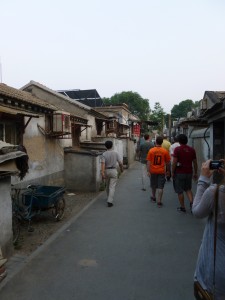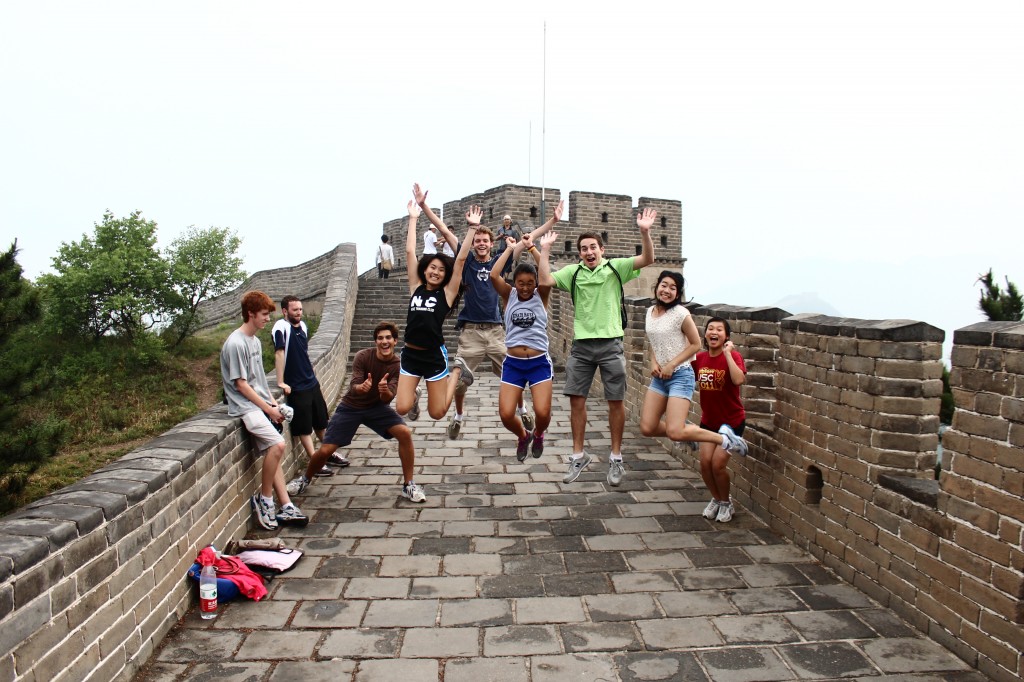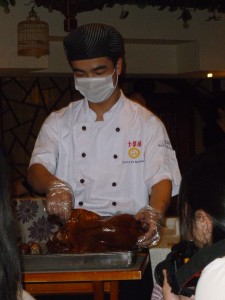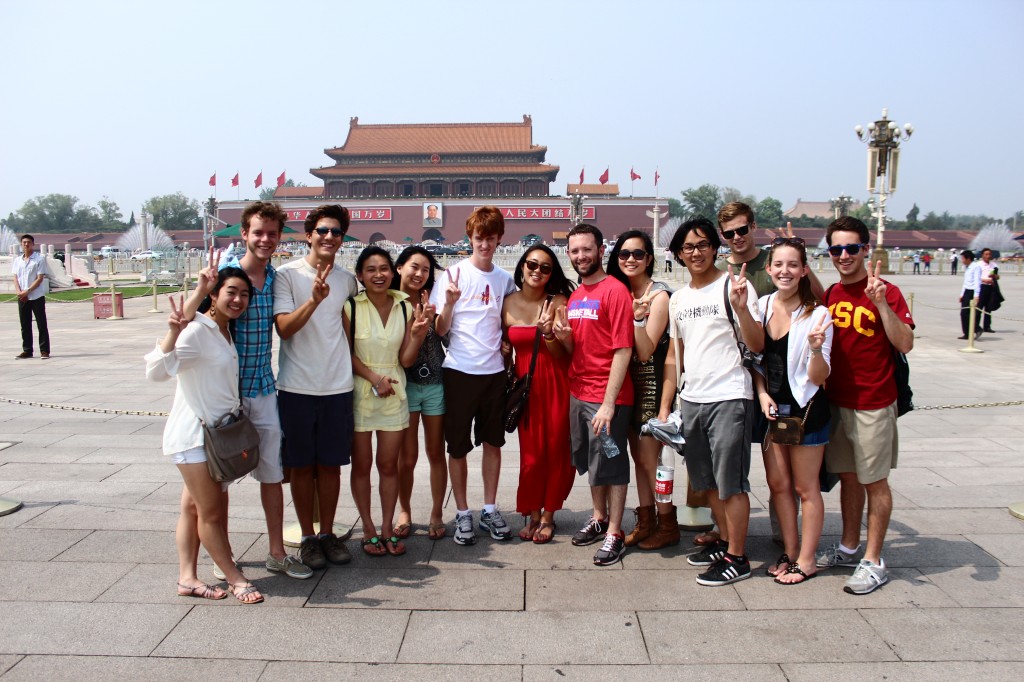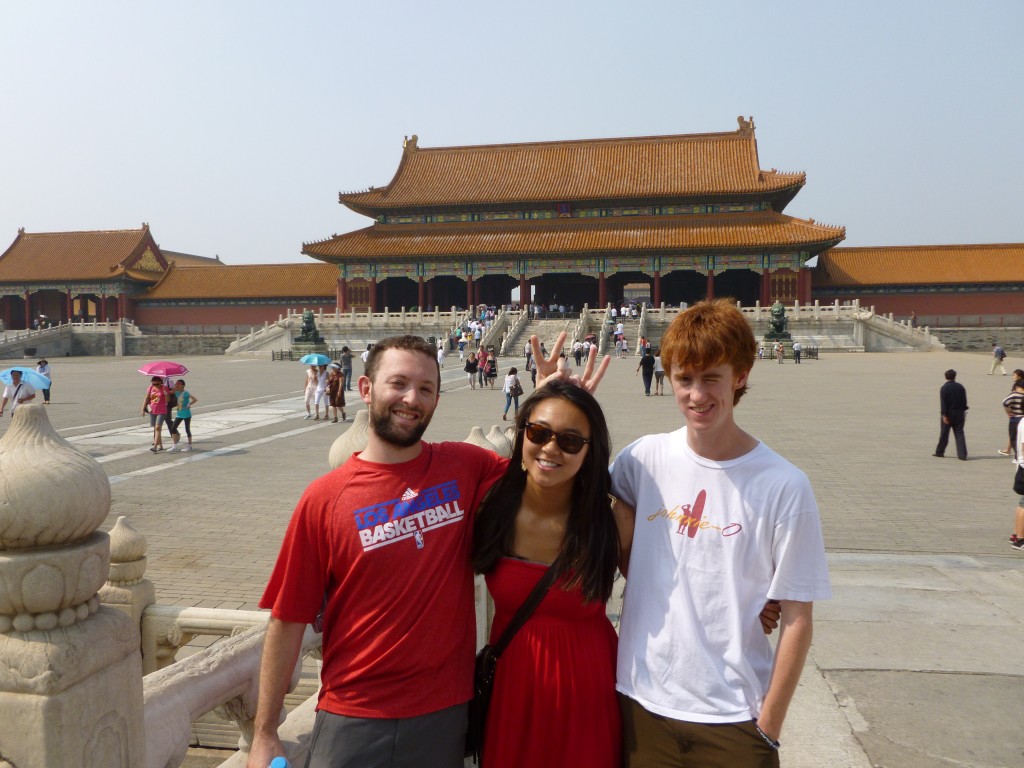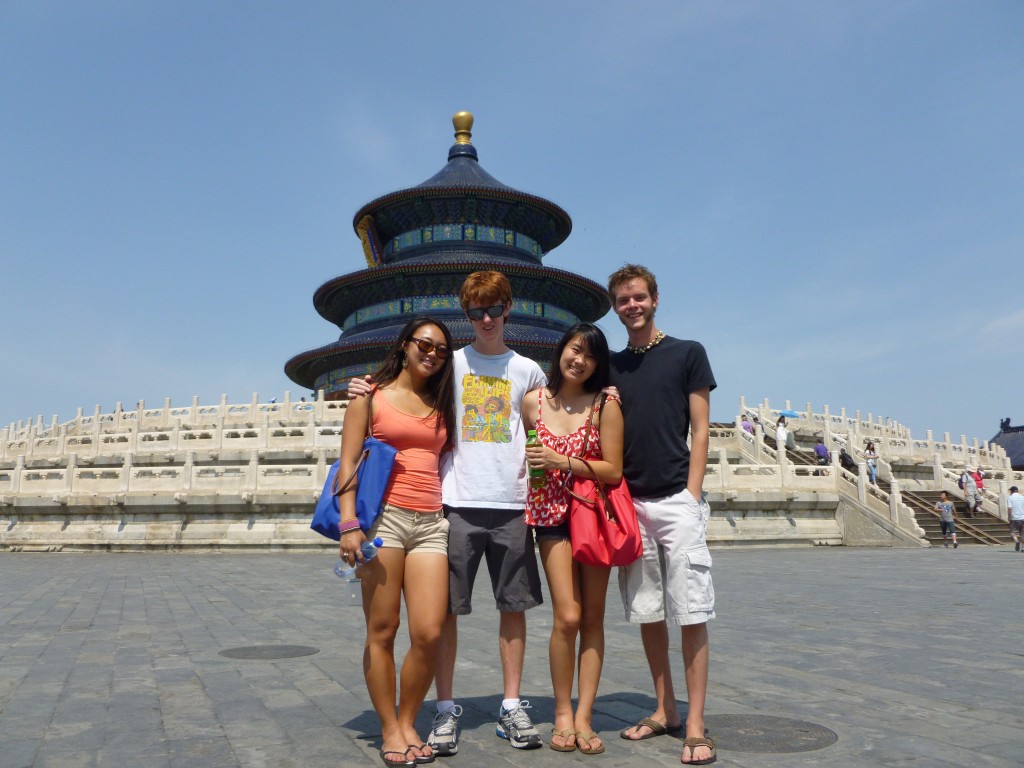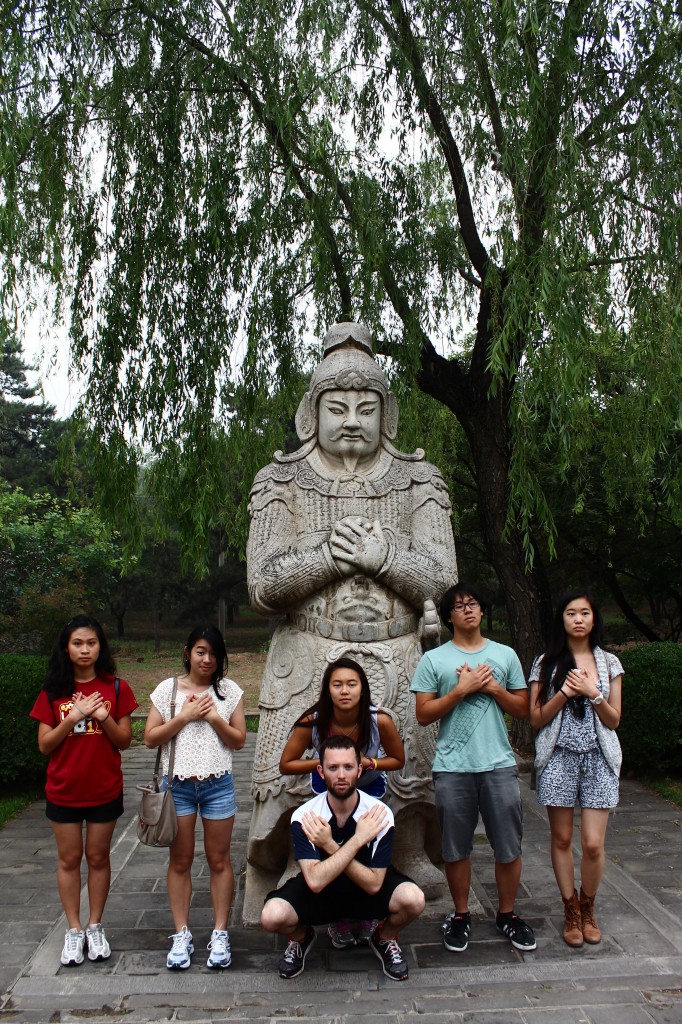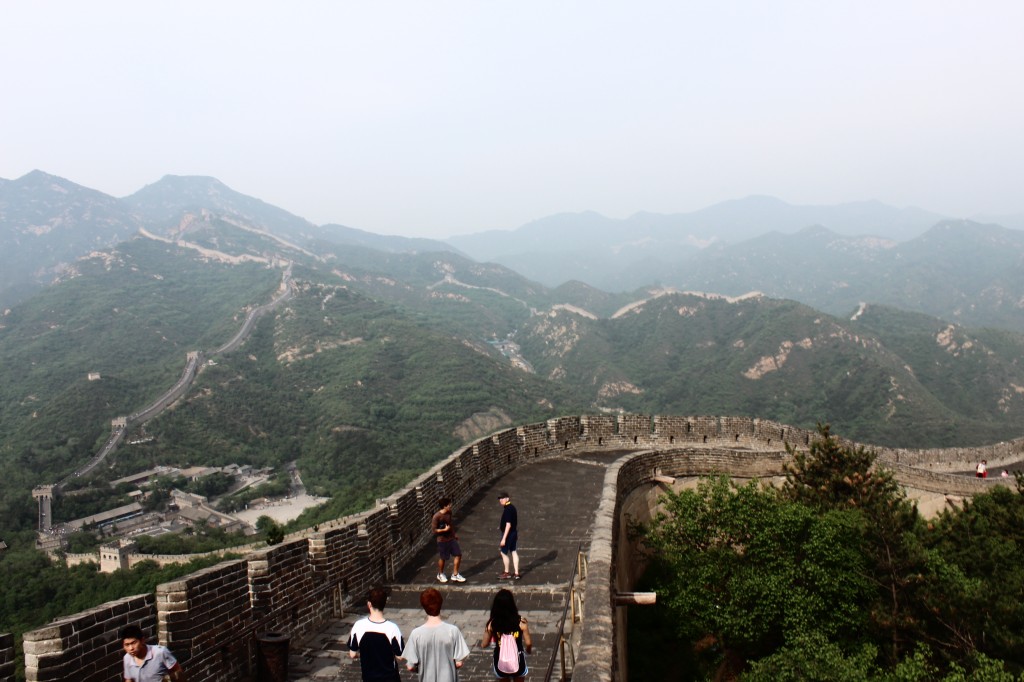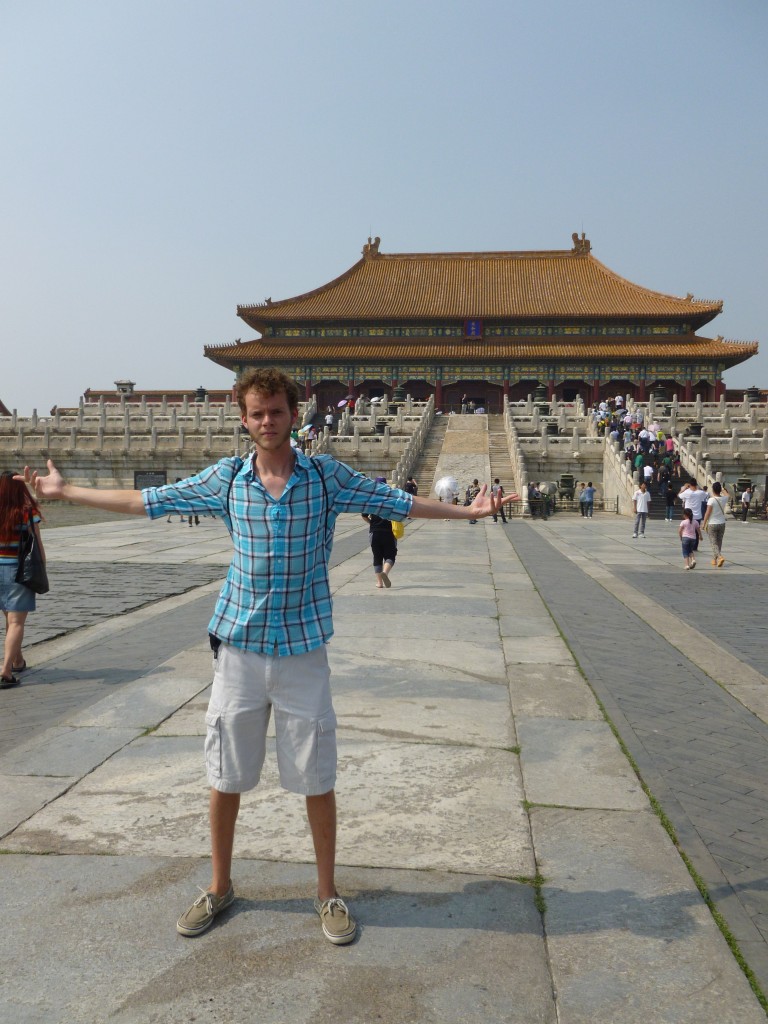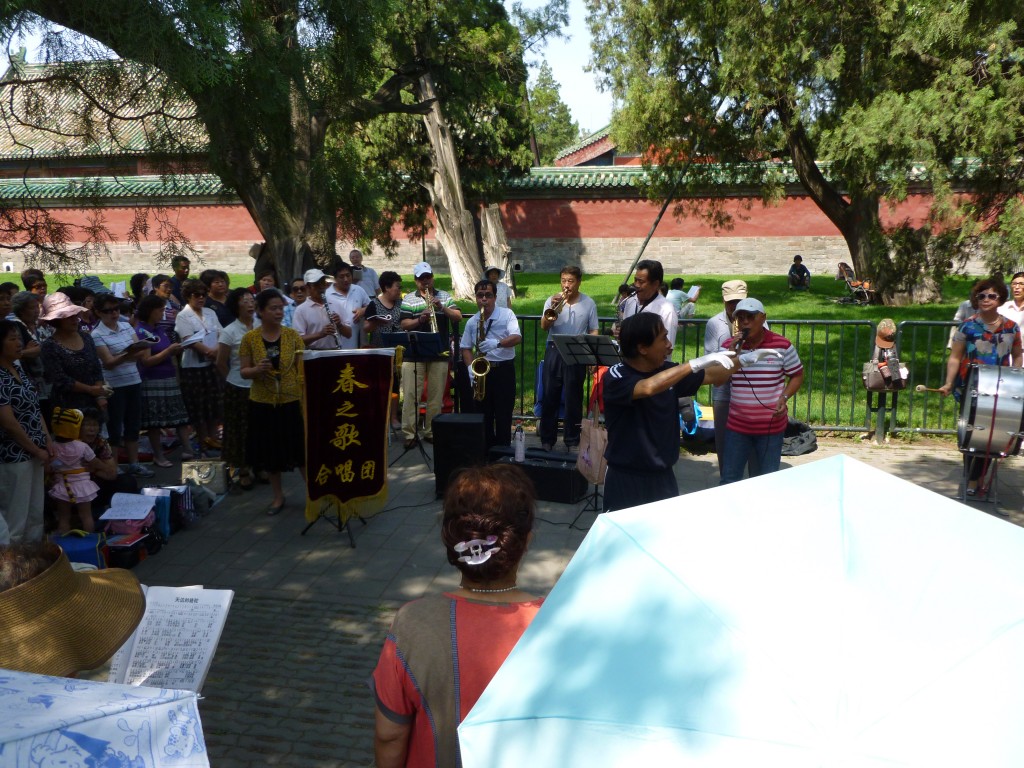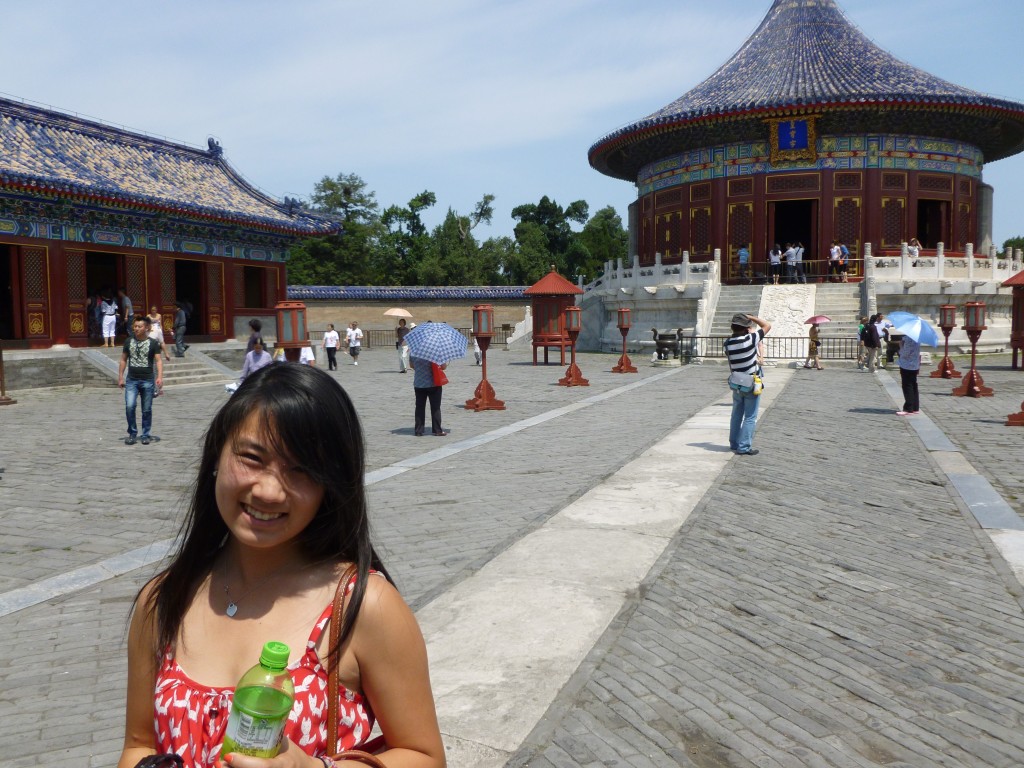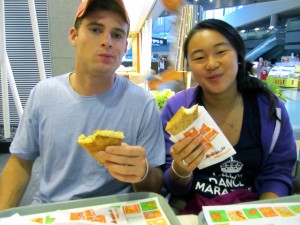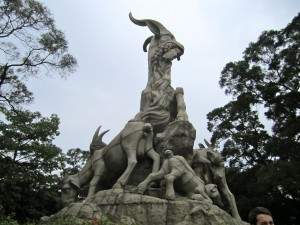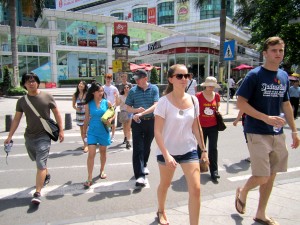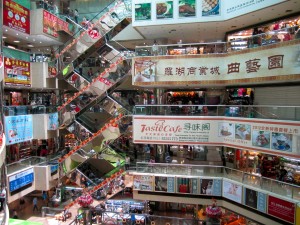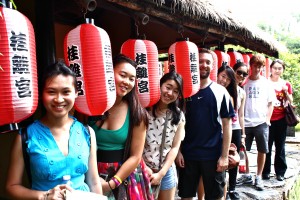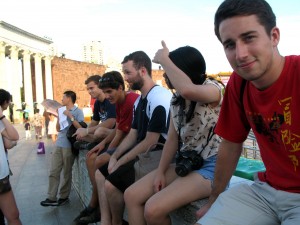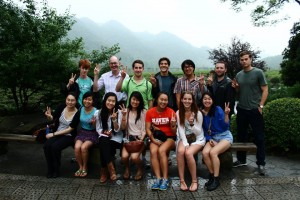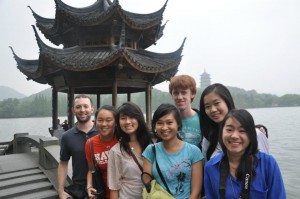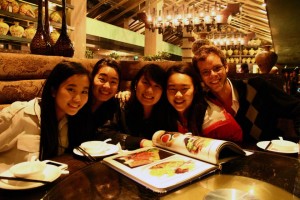By Brian Barkeley and Nate Fulmer
June 2
Beijing huanying ni! (北京欢迎你!) Beijing welcomes you! Global East Asia China students were on the move again this past week. This time, we traveled to Beijing to see many historical sites of ancient China, as well as modern life in the Chinese capital and globalization in yet another urban context.
After landing in Beijing and settling in at the hotel, we took some time to explore the Hutong, or back allies, where many Beijing residents live.
June 3
On Sunday, the first site students visited was the Ming Tombs, a series of elaborate buildings that house the remains of Ming emperors. The tombs are guarded by a path of intricate statues such as the elephant in this photo.
After eating an authentic Chinese lunch prepared in a local village, we visited the Great Wall. Students learned about the wall’s construction, purpose, and eventual penetration by the Qing dynasty. Here, a group of us pose on top of the Great Wall.
It wouldn’t be a complete visit to Beijing without having a chance to see the elaborate Olympic Park constructed for the 2008 Olympics. Students enjoyed a group dinner at a nearby restaurant and capped off a busy day of site-seeing with a more modern twist.
June 4
On Monday, we woke up and made our way to the reinvigorated Qing shopping district. The shopping district houses all sorts of stores and shops – from the name-brand and big gift stores, to the small food and souvenir stands that fill the back alleyways. Many of us bartered our way into everything from clothes to art work to Mao’s little red book. After an afternoon of bargain shopping, we headed out to Houhai (后海) Lake for lunch, where we were treated to Beijing’s famous specialty dish: Peking Duck.
After lunch we were given free time to explore Beijing on our own, and several students and myself chose to explore Tian’anmen (天安门) Square and the Forbidden City. Tian’anmen means “Gate of Heavenly Peace,” and is one of the largest city squares in the world. The area in and around Tian’anmen is home to several national landmarks, including the Monument to the People’s Heroes, the Mausoleum of Mao Zedong, the National Museum of China, the Great Hall of the People, and the Forbidden City. Our visit to the Square was exceptionally timely as June 4th is the anniversary of the pro-democracy protest movement, which ended on June 4th, 1989 with the implementation of martial law in Beijing by the government and the death of several hundred civilians. I think this served to remind me that while I explore so much of China’s auspicious beauty, I must remember that the chronicle of the nation is not so clean and neatly packaged; triumph lives side-by-side with struggle and beauty with horror, but the plaiting of these together serves to write China’s rich history. Pushing past this momentary melancholy, I made my way with my classmates towards the ever-watchful gaze of Chairman Mao’s enormous portrait – beyond which lies the Forbidden City.
The Forbidden City was the Chinese Imperial Palace through both the Ming and Qing Dynasties. For almost 500 years, it was the home of some of the most powerful men and women in Asia. As we approached the entrance to the Palace, we were greeted by the giant portrait of Mao, overlooking the world he is credited with creating. Most of us spent the better part of our afternoon touring the Forbidden City and exploring layer after layer of the Imperial Palace. Behind one gigantic throne room, there would be another gigantic throne room and colossal halls built in honor of the mighty emperor. From the grandiose castles to the auspicious imperial garden, the Forbidden City offered a breathtaking presentation of ancient Chinese power and beauty. Thoroughly exhausted from a day’s worth of walking and exploring, we headed back to the hotel for some well-deserved nap time.
June 5
It was Tuesday, and our time in Beijing had come to a close. But our flight did not leave until 3pm, so that left plenty of time to cram in as much Beijing exploring as possible! So Steph, Joe, and myself went ahead and got up at four in the morning to go to Tian’anmen Square to watch them raise the flag. I was expecting there to be no more than a dozen people including ourselves at the Square, but we were shocked to find that when we got there at 4:30am, Tian’anmen was flooded with people. Almost all of them appeared to be domestic tourists who were visiting Beijing and wanted to watch the flag be hoisted up with the sunrise. On cue, a troop of the People’s Armed Police force emerged out of the Forbidden City and marched the flag to the flagpole under the approving gaze of Chairman Mao. And at exactly 4:46am, the flag was raised to the sound of the Chinese national anthem. All the crowds and pomp and circumstance made for a truly dramatic moment.
The three of us returned to hotel where our classmates remained snuggled up in their beds enjoying the much needed opportunity to sleep in. After a solid three hour nap, I got up again, for I still had a day to seize before I left Beijing. A handful of us got up to do more touring before we said goodbye to Beijing; Fan went and visited Moa’s Mausoleum (or as I like to call it, the Mao-soleum) and the National Museum, Brian went for a jog around Tian’anmen Square, and Steph, Joe, Cynthia, and I went to Tian Tan (天坛), or “The Temple of Heaven.” It was a place filled with singing and dancing, seniors on a day out with their grandchildren, and plenty of tourists and locals alike. We visited the ancient Ming temple, wandered around the park, and watched people gather together to sing, dance, and play.
Finally, we returned to the hotel, packed our things, and were bused back to the airport. With a heart heavy from departing but eagerly anticipating the time we still have, I took one last look and waved goodbye to Beijing.

